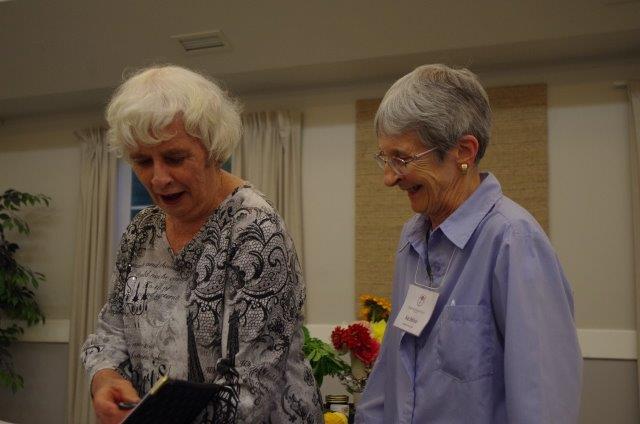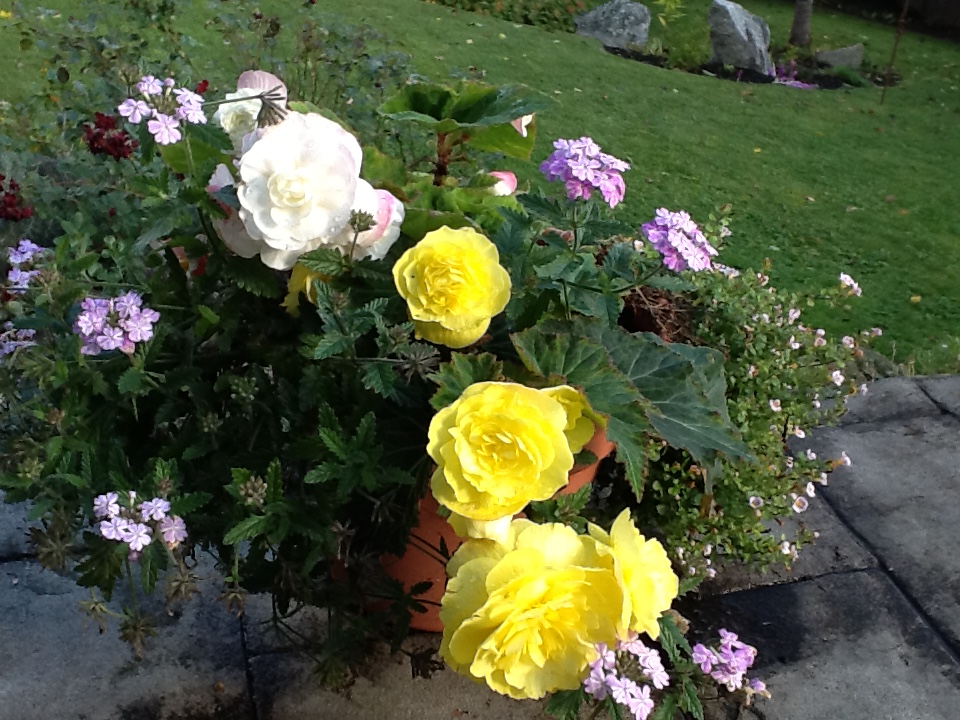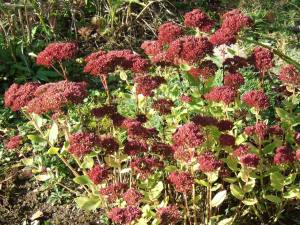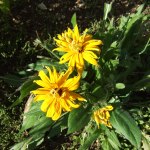” Produce to Preserve “
Whether our produce is a native plant, from our own gardens, a local farmers market, a farmer’s co-operative basket program (weekly baskets that include a mix of vegetables, fruits and herbs according to the season) whose objective is to grow fresh and delicious organic vegetables or from careful “Slow food” choices ( Slow Food – Nova Scotia was founded in 1989 to counteract fast food and fast life, the disappearance of local food traditions and people’s dwindling interest in the food they eat, where it comes from, how it tastes and how our food choices affect the world around us), we have opportunities to eat and preserve local food that is fresh and picked at the peak of its season.
Jayne Campbell, our club president, a retired High School Administrator, who describes herself as a “Gentleman Farmer’s” wife and a food lover (especially home/locally grown), along with several club members treated Chester Garden Club Members to a “feast for the eyes and palate” presentation, Monday, September 18th .
The theme was ” Produce to Preserve – Enjoying the bounty of our gardens year round while growing and buying local”.
Traditional recipes, old cookbooks such as the “Dutch Oven”, “Out of old Nova Scotia Kitchen” and many others were on display.
We all have wonderful memories of the worn pages of the hand written recipes and the taste of family favorites that have been passed down through the generations with titles such as “Gram’s Pickles”, “Mom’s Pies”, “Aunt Millie’s Raisin Bread” .

Thanks to Jayne, Esther, Nancy, Myra, Dave, Sheila S. & Jane W., many went home to reminisce and search out some of their old “comfort food” recipes.
Maybe there will be more samples to enjoy …
 June 19th was a special meeting at the Chester Garden Club. We were able to honour one of our long time dedicated members, Herb Fraser with “Outstanding Member of The Year”. He was very surprised but pleased with the award. Well deserved for all of the work he has done preparing and taking care of so many important gardens in the village.
June 19th was a special meeting at the Chester Garden Club. We were able to honour one of our long time dedicated members, Herb Fraser with “Outstanding Member of The Year”. He was very surprised but pleased with the award. Well deserved for all of the work he has done preparing and taking care of so many important gardens in the village.

































